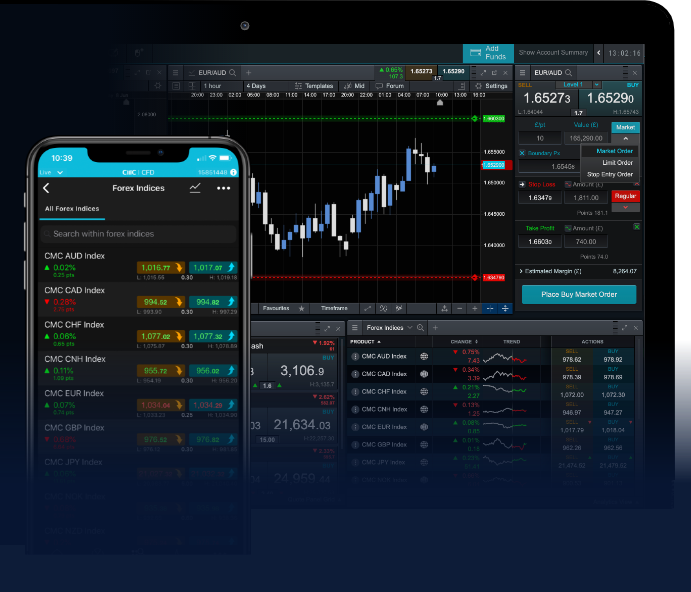
The Ultimate Guide to Forex Trading: Strategies, Tips, and Resources
Forex trading, also known as foreign exchange trading, has become a popular avenue for both novice and seasoned traders. It involves the buying and selling of currencies in a decentralized market to profit from shifts in currency values. Many traders are attracted to the Forex market due to its high liquidity, the ability to trade 24/5, and the potential for significant returns. This guide explores various aspects of Forex trading, including strategies, tips for success, and resources such as forex and trading Forex Brokers in Cambodia.
Understanding the Forex Market
The Forex market is the largest financial market globally, with a daily trading volume exceeding $6 trillion. It operates through financial institutions, brokers, and individual traders, making it accessible to anyone interested in trading currencies. The market is open 24 hours a day, five days a week, providing traders with the flexibility to enter and exit trades at their convenience.
In Forex trading, currencies are traded in pairs (e.g., EUR/USD, GBP/JPY). The first currency in the pair is known as the base currency, and the second is the quote currency. The exchange rate represents how much of the quote currency is needed to purchase one unit of the base currency. Mastering currency pairs is essential for successful trading.
Key Concepts in Forex Trading
Before diving into trading strategies, it’s crucial to understand some fundamental concepts that underpin the Forex market:
- Leverage: Forex brokers often offer traders leverage, allowing them to control larger positions with a smaller amount of capital. While leverage can enhance profits, it can also amplify losses.
- Margin: This refers to the amount of money a trader must deposit to open a leveraged position. Understanding margin requirements is vital to managing risk.
- Lot Size: Forex trading typically operates in standardized units called lots. A standard lot is 100,000 units of the base currency, while there are also mini and micro lots.
- Spread: The spread is the difference between the bid and ask prices of a currency pair. It’s a crucial factor to consider as it impacts the profitability of trades.
- Pips: A pip is the smallest price movement in a currency pair. For most pairs, this is the fourth decimal place, while for some, it’s the second (e.g., JPY pairs).
Forex Trading Strategies
Successful Forex trading involves implementing effective strategies. Here are some popular trading strategies used by traders around the world:
1. Scalping
Scalping is a short-term trading strategy where traders aim to make small profits from minute price changes. Scalpers typically hold positions for a few seconds to a few minutes and execute multiple trades throughout the day. This strategy requires quick decision-making and a good understanding of technical analysis.
2. Day Trading
Day trading involves opening and closing positions within the same trading day. Day traders analyze forex price movements and make predictions to capitalize on market fluctuations. This strategy requires strong analytical skills and the ability to react quickly to market news and events.
3. Swing Trading
Swing trading is a medium-term strategy where traders hold positions for several days to take advantage of price swings. Swing traders often rely on technical analysis but may also consider fundamental factors impacting currency movements.
4. Position Trading

Position trading is a long-term strategy where traders hold positions for weeks, months, or even years. This approach requires a solid understanding of macroeconomic factors and trends that influence currency values over time.
Risk Management in Forex Trading
Effective risk management is essential for long-term success in Forex trading. Here are some essential risk management techniques:
1. Set Stop-Loss Orders
Stop-loss orders automatically close a trade when it reaches a predetermined level of loss. Setting stop-loss orders ensures that traders do not lose more than they can afford on any given trade.
2. Diversify Your Portfolio
Diversification involves spreading investments across various currency pairs or other asset classes to reduce risk. By diversifying, traders can minimize the impact of negative price movements in a single pair.
3. Use Proper Position Sizing
Proper position sizing involves determining the right amount of capital to allocate to each trade based on account size and risk tolerance. This technique helps prevent significant losses and preserves capital.
Choosing a Forex Broker
Selecting the right Forex broker is a crucial step for successful trading. Here are some factors to consider when choosing a broker:
- Regulation: Ensure that the broker is regulated by a reputable authority to ensure a safe trading environment.
- Fees and Spreads: Compare the spreads and fees charged by different brokers. Lower costs can improve overall profitability.
- Trading Platform: The trading platform should be user-friendly and equipped with necessary tools for analysis and trading.
- Customer Support: Responsive customer support can assist traders with their queries and issues.
- Trading Instruments: Some brokers offer a wider range of trading instruments, including CFDs and commodities along with Forex pairs.
Getting Started with Forex Trading
To begin trading Forex, follow these steps:
- Choose a Reliable Broker: Research and select a broker that aligns with your trading style and offers the necessary features.
- Open a Trading Account: Complete the registration process and fund your trading account with an amount you can afford to trade.
- Develop a Trading Plan: Outline your trading goals, risk tolerance, and strategies in a trading plan to guide your decisions.
- Practice with a Demo Account: Use a demo account to familiarize yourself with the trading platform and practice your strategies without risking real money.
- Start Trading: Begin trading with small amounts while you gain experience and confidence in your trading abilities.
Conclusion
Forex trading offers exciting opportunities for financial gain but requires knowledge, discipline, and risk management. By understanding the market, developing effective strategies, and choosing the right broker, traders can improve their prospects in the ever-evolving Forex landscape. Always remain informed and adaptable to leverage changes in the market to your advantage.
